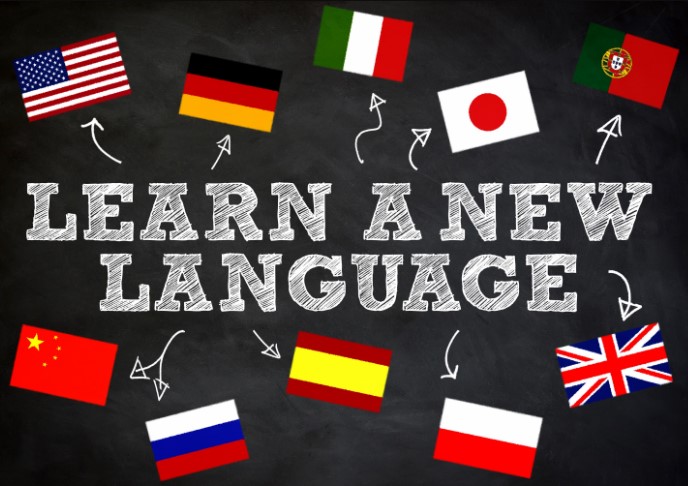
Learning a new language is more than just a skill; it’s an enriching journey that opens doors to new cultures, ideas, and opportunities. In this article, we’ll delve into the world of language acquisition, exploring its importance, methods, challenges, and the transformative impact it can have on your life.
I. Introduction
A. Importance of learning a new language
Language is a powerful tool that goes beyond mere communication; it’s a gateway to understanding different cultures and perspectives. In a globalized world, being multilingual offers a competitive edge in various aspects of life.
B. Cognitive benefits of language acquisition
Studies show that learning a new language enhances cognitive abilities, such as problem-solving, multitasking, and memory. It stimulates the brain, keeping it agile and adaptable.
II. Choosing the Right Language
A. Personal goals and interests
Selecting a language that aligns with your interests and goals makes the learning process more enjoyable and sustainable.
B. Job market demands
Consider the demand for specific languages in your desired field, giving you a strategic advantage in the job market.
III. Methods of Learning
A. Traditional classroom learning
Structured classroom settings provide a foundation for language learning, offering interaction with teachers and peers.
B. Online language courses
The digital age has brought forth a plethora of online language courses, offering flexibility and accessibility for learners worldwide.
C. Immersive language experiences
Immerse yourself in a language by living in a foreign country or participating in language immersion programs for a more authentic learning experience.
IV. Overcoming Language Learning Challenges
A. Common difficulties faced by learners
From pronunciation hurdles to grammar complexities, understanding common challenges is the first step in overcoming them.
B. Strategies to overcome challenges
Implement effective strategies such as consistent practice, using language apps, and seeking native speakers for practice.
V. Utilizing Technology in Language Learning
A. Language learning apps
Explore the wide array of language apps that make learning interactive, engaging, and tailored to individual needs.
B. Interactive online platforms
Participate in language exchange platforms that connect learners globally, fostering a sense of community and collaboration.
C. Virtual reality language immersion
Cutting-edge technology allows learners to virtually immerse themselves in language scenarios, enhancing practical language application.
VI. Cultural Understanding through Language
A. Impact of language on cultural appreciation
Language is intertwined with culture; learning a language deepens cultural understanding, fostering open-mindedness and tolerance.
B. Enhanced travel experiences
Speaking the local language enhances travel experiences, allowing for deeper connections with locals and a more immersive exploration of a new place.
VII. Real-life Applications
A. Applying language skills in professional life
Multilingual individuals often enjoy career advantages, as language skills are highly valued in various industries.
B. Social benefits of multilingualism
Beyond professional gains, being multilingual enriches social interactions, broadening your circle and creating diverse connections.
VIII. Tips for Accelerated Language Learning
A. Consistent practice routines
Regular, focused practice is key to language proficiency. Establish a routine that fits your schedule and goals.
B. Setting realistic goals
Break down your language learning journey into achievable milestones, celebrating small victories along the way.
IX. Psychological Aspects of Language Learning
A. Boosting confidence through small victories
Acknowledge and celebrate every step forward, boosting your confidence and motivation.
B. Developing a positive mindset
Approach language learning with a positive mindset, viewing challenges as opportunities for growth.
X. Measuring Language Proficiency
A. Language proficiency tests
Evaluate your language skills through proficiency tests to gauge your progress accurately.
B. Self-assessment tools
Use self-assessment tools to reflect on your strengths and areas for improvement, fostering continuous growth.
XI. Maintaining Language Skills
A. Continuous learning strategies
Stay engaged with the language by consuming media, reading, and participating in language communities to maintain proficiency.
B. Joining language exchange communities
Connect with fellow learners and native speakers in language exchange communities for ongoing practice and cultural exchange.
XII. The Future of Language Learning
A. Advancements in language education technology
Explore emerging technologies shaping the future of language education, making learning more interactive and personalized.
B. Globalization’s impact on language acquisition
As the world becomes more interconnected, the ability to speak multiple languages becomes increasingly valuable, emphasizing the importance of language learning.
XIII. Success Stories in Language Learning
A. Interviews with successful language learners
Gain inspiration from real-life success stories, discovering the diverse paths individuals have taken on their language learning journeys.
B. Motivational anecdotes
Explore motivational anecdotes that highlight the transformative power of language learning in people’s lives.
XIV. Conclusion
A. Recap of the benefits of language learning
From cognitive advantages to enhanced cultural understanding, learning a new language opens up a world of possibilities.
B. Encouragement for readers to embark on their language learning journey
Embrace the challenge of learning a new language, and let the journey enrich your life in ways you never imagined.
XV. FAQs
A. What is the easiest language to learn?
Every individual’s experience varies, but languages with similar structures to your native language may be perceived as easier.
B. How long does it take to become fluent in a new language?
Fluency timelines differ, but consistent daily practice can lead to noticeable improvement within a few months.
C. Can age affect language learning abilities?
While younger individuals may pick up languages faster, adults can still become proficient with dedication and effective strategies.
D. Are online language courses effective?
Yes, many online language courses are effective, offering flexibility and tailored learning experiences.
E. How can I maintain multiple language skills?
Regular practice, exposure to the languages through media and conversations, and joining language communities can help maintain multiple language skills.

